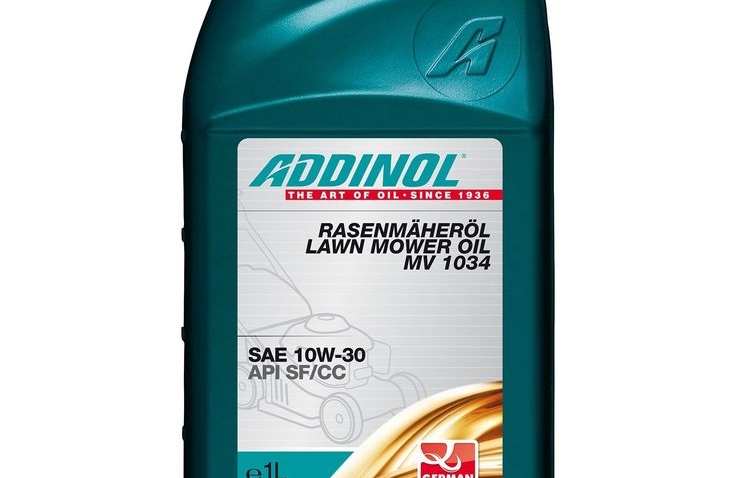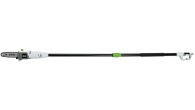
What Kind of Oil Do You Put in a Lawnmower: Choosing the Right
Importance of Selecting the Proper Oil
Choosing the right oil for your lawnmower goes beyond just keeping the engine running. Selecting the proper oil impacts the engine’s lifespan, efficiency, and performance. Using the wrong type of oil can result in increased wear and tear. It can also lead to buildup of deposits. This affects overall functionality. Always match the oil to your mower’s specific requirements.

The right oil type ensures that the lawnmower operates smoothly. It maintains the right temperature and prevents overheating. It also provides lubrication to moving parts. This reduces friction and prevents damage. In cold weather, the correct oil helps with easier starts. It also ensures that the engine warms up quickly. During high temperatures, it protects engine parts from thermal breakdowns.
Using the correct oil also saves money in the long run. It decreases the need for repairs due to engine damage. Proper oil maintains engine cleanliness. It keeps contaminants from harming internal parts. Remember, a well-maintained engine is an efficient engine. And efficiency translates to savings on fuel.
To sum up, ‘What kind of oil do you put in a lawnmower?’ is not just a question. It is a crucial decision for maintaining your equipment. It prolongs the life of your lawnmower and ensures optimal performance. Keep in mind the specific oil recommendations for your mower type. Do this, and you’ll keep your lawnmower’s engine in prime condition for seasons to come.
Types of Oil Used in Lawnmowers
When considering ‘what kind of oil do you put in a lawnmower’, two main types stand out. Understanding the differences between them is crucial. It ensures you choose the best oil for your mower’s engine. These are conventional and synthetic motor oils.
Conventional Motor Oils
Conventional motor oils, also known as mineral oils, are refined from crude oil. They have been the go-to choice for many years. They provide good lubrication and are cost-effective. This makes them a popular choice for lawnmower owners. They work well in standard operating conditions. But they may not be the best option under extreme temperatures or heavy usage.
These oils contain additives. These help protect the engine and extend oil life. However, they have limitations in temperature tolerance. Over time, they can break down faster than synthetic oils. This can lead to more frequent oil changes.
Synthetic Motor Oils
Synthetic motor oils are engineered in labs. They offer superior performance compared to conventional oils. These oils are designed to function well in extreme conditions. They resist high temperatures and work well in cold climates too.
Synthetic oils protect against wear. They keep engines clean by fighting off sludge and deposits. This means less friction on moving parts. These oils also last longer. This can reduce the frequency of oil changes. Although they are more costly upfront, their durability offers long-term savings.
In conclusion, choosing between conventional and synthetic oils depends on various factors. These include your lawnmower’s engine type, operating conditions, and budget. It’s essential to weigh these considerations to ensure the longevity and efficiency of your lawnmower. Make sure to look out for the appropriate viscosity rating, which we will discuss next.
Understanding Viscosity Ratings for Lawnmower Oil
Understanding viscosity ratings is vital when figuring out ‘what kind of oil do you put in a lawnmower’. Viscosity refers to the oil’s resistance to flow. In essence, it’s a measure of how thick or thin the oil is. The right viscosity ensures the oil can properly lubricate the engine under various temperatures.
 Oils are typically rated with two numbers, indicating their viscosity in cold and hot weather. These ratings, such as 10W-30, can be found on the oil container. The first number with the ‘W’ (standing for ‘winter’) shows the oil’s flow at 0°F. The lower this number, the less it thickens in the cold. The second number indicates the oil’s viscosity at 212°F. The higher this number, the better it protects at high temperatures.
Oils are typically rated with two numbers, indicating their viscosity in cold and hot weather. These ratings, such as 10W-30, can be found on the oil container. The first number with the ‘W’ (standing for ‘winter’) shows the oil’s flow at 0°F. The lower this number, the less it thickens in the cold. The second number indicates the oil’s viscosity at 212°F. The higher this number, the better it protects at high temperatures.
For lawnmowers, viscosity ratings are paramount. They influence engine start-up and protect against wear during operation. You need an oil that stays fluid in cold weather for easy starts. It also needs to remain thick enough in heat to protect your lawnmower’s engine.
Choosing the correct viscosity rating is a balance. You want oil thick enough to form a protective layer over engine parts. But it shouldn’t be so thick that it strains the engine during start-up or operation. Always consult your mower’s manual for the manufacturer’s recommended viscosity. This will keep your lawnmower running smoothly in all seasons.
In summary, the viscosity rating is key to engine protection and performance. Make sure to select the oil with an appropriate rating for your mower’s operating conditions. This decision impacts the efficiency and longevity of your lawnmower’s engine.
Oil Recommendations by Lawnmower Engine Type
Choosing the right oil for your lawnmower depends on the engine type you have. Manufacturers typically specify the best oil to use. Check your manual to find this information. Here, we will explore suitable oils for push mowers and riding mowers.
For Push Mowers
Push mowers are common for smaller lawns. They often have simpler engines. For these mowers, conventional oil might suffice. A common recommendation is a good quality SAE 30 motor oil. This oil is well-suited for higher temperatures. But, if you mow in variable temperatures, a multi-grade like 10W-30 is a better choice. It provides protection across a range of temperatures. Always confirm with your mower’s manual before making a choice.
For Riding Mowers
Riding mowers have more complex engines. They may need better protection than a push mower’s engine. Because of this, synthetic oils are a frequent recommendation. They offer the needed durability for longer, more intense mowing sessions. Synthetic oils such as SAE 5W-30 provide excellent protection in both hot and cool conditions. For mowers with air-cooled engines, an oil like SAE 10W-30 keeps the engine functioning well in a variety of climates. Again, always check your owner’s manual. It has the final say on ‘what kind of oil do you put in a lawnmower’.
When servicing your lawnmower, use the oil type that aligns with your engine and usage. This ensures your mower stays reliable season after season.
Seasonal Considerations for Lawnmower Oil
When you ask ‘what kind of oil do you put in a lawnmower’, seasons matter. Different seasons bring distinct temperature conditions. These affect your lawnmower’s oil needs.
In spring, most areas experience moderate temperatures. A standard motor oil, like SAE 30, works well. It provides reliable lubrication without being too thick.
Come summer, heat rises. Engines overheat if not properly lubricated. Here, oils with higher viscosity like SAE 10W-30 offer better protection. They maintain good flow even in high temps.
Autumn brings cooler weather. Lighter viscosity oils may be needed. These help start the engine in lower temperatures. Oils with a ‘W’ rating are formulated for this purpose.
Winter poses the biggest challenge. Freezing temperatures demand oil that flows easily. Multi-grade oils, such as 5W-30, are best. They ensure the lawnmower starts and operates smoothly during cold snaps.
To summarize, consider the season before choosing your lawnmower oil. Follow your manufacturer’s guidance. This ensures your engine is protected year-round. Adapt oil choices as temperatures change. Doing so optimizes your lawnmower’s performance and longevity.
How to Check and Change Lawnmower Oil
Regular oil checks and changes keep your lawnmower running efficiently. This is how you do it.
First, warm up your mower. Run it for a few minutes. Warm oil flows better, making it easier to change.
Next, turn off the engine. Let it cool slightly. Ensure the mower is on a flat surface.
Find the oil dipstick. It’s usually near the engine. Pull the dipstick out. Wipe it clean. This ensures an accurate reading.
Insert the dipstick back without screwing it in. Pull it out again. Check the oil level. It should be between the high and low marks.
If the oil looks dark or dirty, it’s time to change it. To do this, place a container under the oil drain plug. Remove the plug carefully. Let the oil drain out completely.
Replace the drain plug securely. Now add new oil. Check your manual for ‘what kind of oil do you put in a lawnmower’. Fill it to just below the top mark on the dipstick.
Put the oil cap back on. Wipe any spills. And you’re done! You have successfully changed your lawnmower oil.
Remember to check oil levels regularly. Change the oil based on manufacturer recommendations or after 50 hours of use. This simple maintenance task can extend your lawnmower’s life and ensure peak performance.
Common Mistakes to Avoid When Choosing Lawnmower Oil
When selecting ‘what kind of oil do you put in a lawnmower‘, avoid common mistakes. They can lead to reduced mower performance and engine damage. Here are key errors to keep in mind.
- Ignoring the Manufacturer’s Recommendations: Your lawnmower’s manual is your best guide. Always use the oil type and viscosity that the manufacturer advises.
- Choosing Cheap Oil to Save Money: Cheaper oils may not provide the protection your mower needs. Investing in quality oil saves you more on future repairs.
- Using Car Oil Instead of Lawnmower Oil: Oils for cars and lawnmowers are different. Car oils may not meet the specific needs of mower engines.
- Neglecting Seasonal Viscosity Changes: As seasons change, so should your oil viscosity. Using the wrong viscosity can hinder engine start-up and performance.
- Skipping Regular Oil Checks: Consistent oil checks are crucial. They help spot problems before they become major issues.
- Overfilling the Engine: Too much oil can cause leaks or damage. Fill to the mark specified in the manual.
By avoiding these mistakes, you’ll ensure your mower runs well for years to come.
 FAQs About Lawnmower Oil
FAQs About Lawnmower Oil
When it comes to maintaining your lawnmower, understanding ‘what kind of oil do you put in a lawnmower’ is crucial. Here are some commonly asked questions to guide you further.
- Can I use car oil for my lawnmower? No. While some car oils may be similar, it’s best to use oil meant for lawnmowers, as per the manufacturer’s recommendation.
- How often should I change my lawnmower oil? Generally, change the oil after every 50 hours of use, or as directed in your manual.
- What happens if I use the wrong oil? Using incorrect oil can cause engine problems. It may lead to increased wear or even engine failure.
- Is synthetic oil better for my lawnmower? Synthetic oil can offer better protection, especially for riding mowers or in extreme conditions.
- Can I switch oil types? Yes, but refer to the manual to ensure compatibility. An oil change is also necessary when switching.
- What does SAE stand for? SAE stands for Society of Automotive Engineers. It’s a rating that indicates oil viscosity.
- Why is oil viscosity important? Viscosity impacts how well the oil protects the engine in different temperatures.
Remembering these FAQs can help prevent common mistakes and ensure your lawnmower functions efficiently. Always consult your mower’s manual for the most accurate and specific guidance regarding ‘what kind of oil do you put in a lawnmower’. Your lawnmower’s performance and longevity depend on it.












Leave a Reply